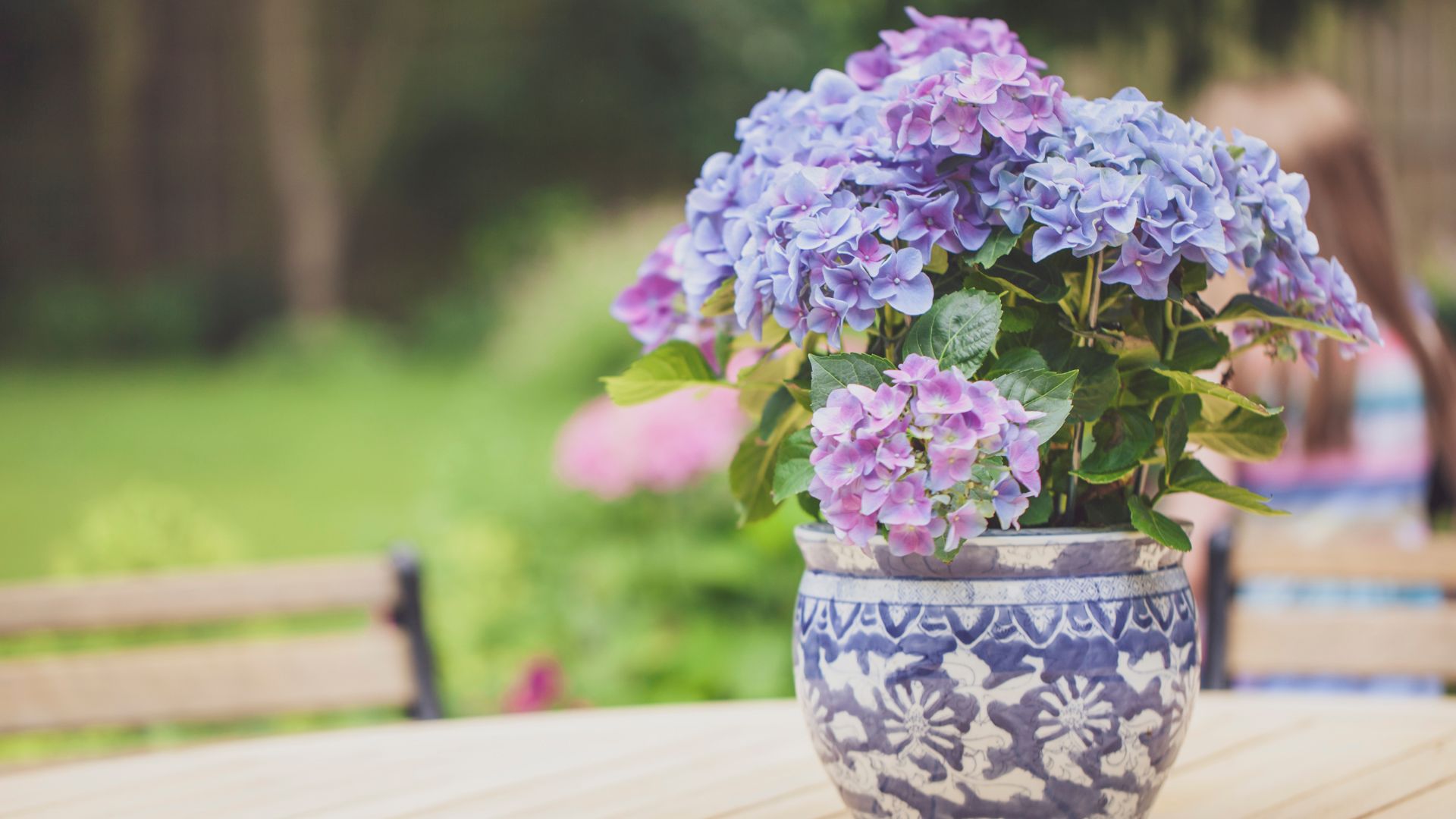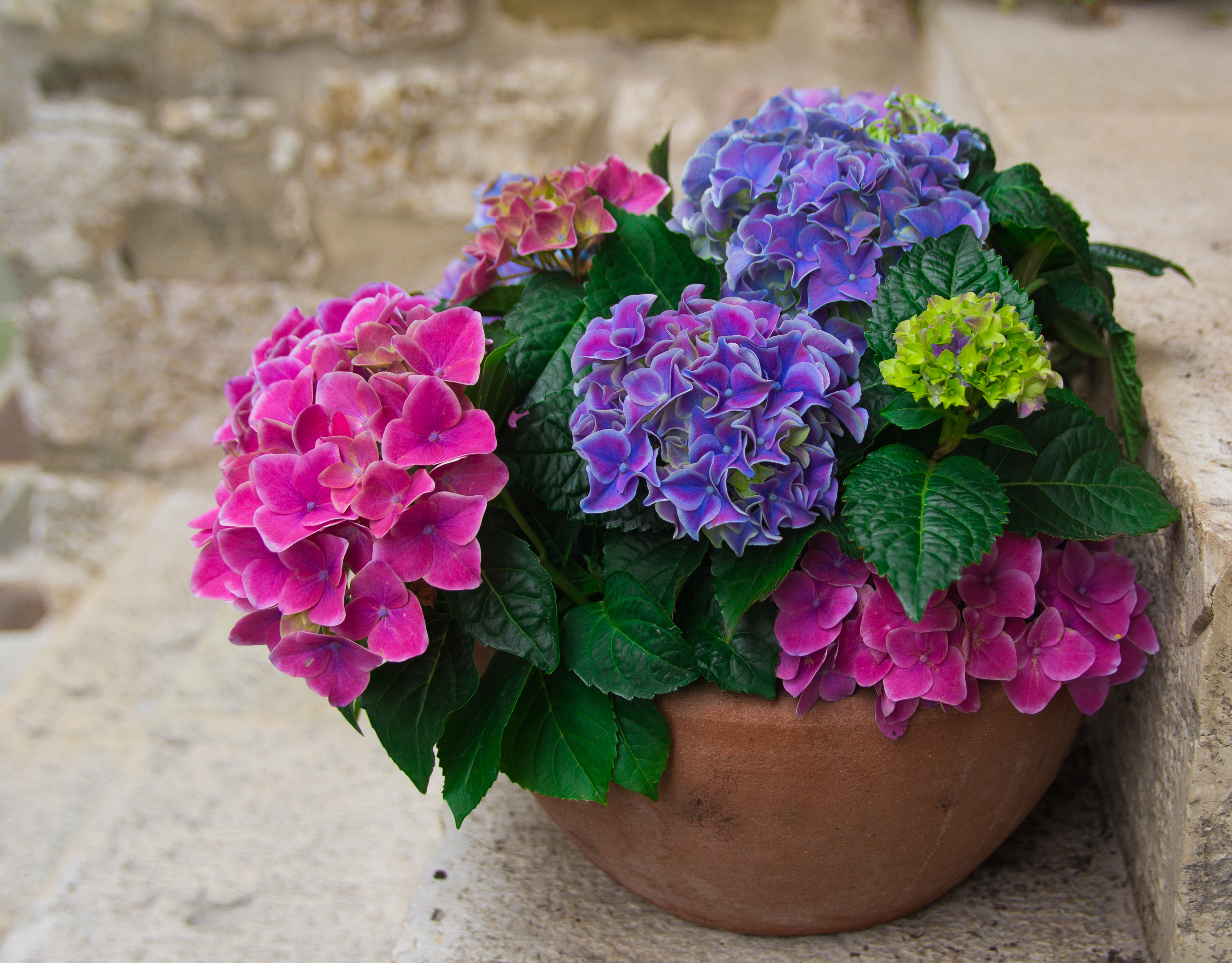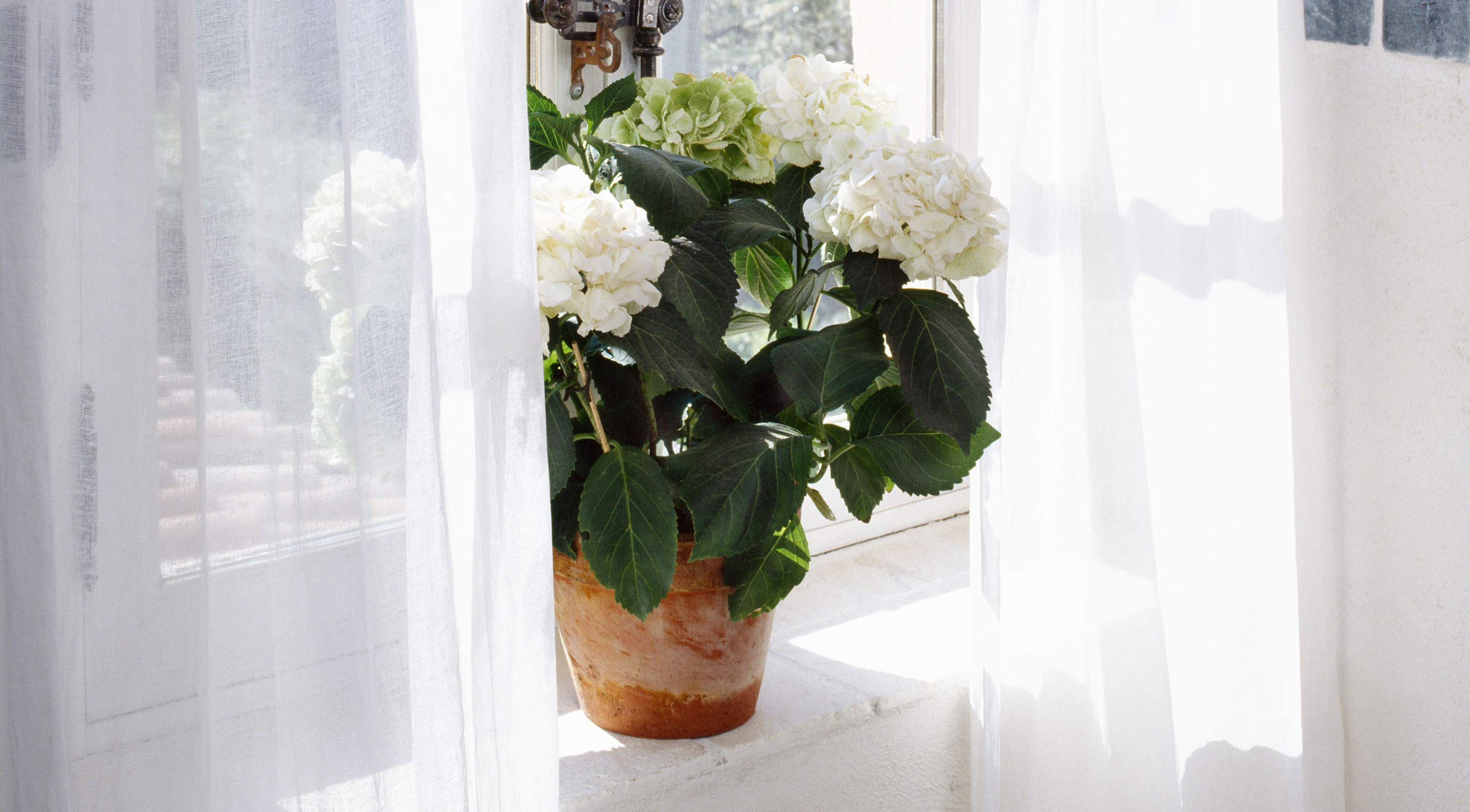
If you're a seasoned Livingetc garden content consumer then you're probably well aware of our obsession with hydrangeas. I mean, what's not to love? Their color range, clustered florets, and wide variety make up just three of the very many reasons we have heart eyes for hydrangeas.
Not to forget, one of the best qualities they harbor is their ability to grow in a container gardening setup. So you don't have to miss out on the lush flowering foliage they bring to a backyard if outdoor space constraints have held you back so far.
Now, when it comes to successfully growing these blooms, there are some basic dos and don'ts that all professional gardeners follow. But we don't gatekeep, so, we have collected some brilliant insight, courtesy of our favorite planting experts. Embrace the dos, avoid the don'ts and you'll be golden on all potted hydrangea fronts.
Dos

There are a few things people with perfect hydrangeas know, the first being to ensure you know and understand your plant, and its needs. Let's get into what you should do with your blooming to get it to thrive.
1. Choose the right variety
While talking to gardening expert Tony O'Neill, he mentions that one of the most important things to consider when planting hydrangeas in pots is the variety. "Opt for hydrangea varieties that do well in containers, like hydrangea macrophylla or hydrangea paniculata," he says. "These types are compact, making them perfect for pots."
2. Pick the proper soil
"Now, let's talk dirt," says Allison Jacob plant expert at Trimmed Roots. She explains that your hydrangeas need top-notch soil to thrive. "Go for a potting mix made for flowering plants," she advises. "It'll keep your plant's roots happy and prevent water from pooling around them." This Coast of Maine Organic and Natural Planting Soil from Walmart is perfect for hydrangea planting.
3. Maintain a watering routine
When it comes to potted hydrangea care, following a regulated watering schedule is the best practice. Tony points out that hydrangeas in pots need consistent watering, especially in warmer months. He encourages gardeners to keep the soil moist but not soggy, paying proper attention to this step as hydration is key for their bloom health.
4. Fertilize during growing season
Besides knowing the best time to plant hydrangeas, it's also important to know how to care for them following the sowing process. Anastasia Borisevich, plant expert at Plantum, tells us that it's best to use nitrogen-rich plant food in spring, like this 8-4-8 Acidic Fertilizer from Amazon. "At the beginning of the budding period and during flowering, feed your plant with phosphorus-potassium fertilizers," she adds. "I recommend applying all fertilizers to the soil twice a month."
5. Protect from intense heat
If there's one thing all hydrangea plant parents should watch out for, it's the consequences of leaving them to bask in the direct sun for extended periods. "While hydrangeas love sunlight, direct midday sun can scorch their leaves," notes Tony. "So place your pots in spots with morning sun and afternoon shade, or move them if they look stressed."
Price: 34.95
Volume: 1-Quart Plant
Bred in Kyoto, Jackson & Perkin's Hydrangea 'Miss Saori' is of the macrophylla species, and this dwarf bigleaf plant blooms globose clusters of white, pink-edged double florets.
Price: 53.99
Quantity: 2 Plants
This Onyx Peacock Bigleaf Hydrangea from Walmart is also of the macrophylla variety and the flowers change color depending on the soil pH — pink in acidic and blue in alkaline.
Price: 59.99
Volume: 3-Gallon Plant
As you can tell by its name, this Limelight Prime Panicle Hydrangea from Amazon falls under the paniculata species and flowers green white cone-shaped blooms that develop pink and red tones upon aging.
Don'ts

So, what are the don'ts of growing hydrageas in containers? From the size of the pot to overwatering, there are a few things you should keep an eye on.
1. Use too small a pot
Regardless of the plant, one of the most common container gardening mistakes to avoid is selecting the wrong planter size. Tony tells us that hydrangeas need room to grow and choosing a small pot could be the bloom's downfall. "Make sure the pot is at least 18-24 inches in diameter," he says. "And deep enough to allow for root expansion."
2. Drown your blooms
While Allison does reinforce the need for a regular watering schedule, she also tells us that it's important to steer clear of indulging in either extreme — under and overwatering, with the latter being slightly more harmful. "Overwatering is a common mistake that can lead to root rot," she explains. "If the soil feels damp, hold off on watering for a day or two."
3. Ignore the need for repotting
Another easy mistake to make is forgetting to transfer your hydrangea to a larger planter as it matures. But as easy as this mistake may be to make, it's best avoided. "Potted hydrangeas may become root-bound after a couple of years," says Tony. "I recommend repotting them into a larger container every two to three years to ensure they have room to thrive."
4. Prune at the wrong time
One of the main things to note is that different varieties need pruning at different times. As convenient as it would be, they don't all run on the same maintenance clock. "Some hydrangeas bloom on old wood, so pruning at the wrong time can eliminate next year’s blooms," notes Tony. "Know your variety before cutting back any branches."
Remember, some varieties call for cutting back hydrangeas in fall, so do a quick scan of your garden, and don't forget to add this to your autumn garden task list.
5. Forget to insulate in colder climates
If you're familiar with the concept of winterizing hydrangeas then this don't is probably on your radar. And don't be fooled by the simplicity of the task; it really protects hydrangea planters. "If you live in a cold region, potted hydrangeas are more vulnerable to freezing," explains Tony. "So move them to a sheltered spot or wrap the pots in burlap to protect the roots."
Price: $137.16
Size: 19.9" D
We found this Kante Dia Round Planter on Amazon and it's the perfect size for growing hydrangeas. Plus, the gray concrete finish offers a chic decorative accent to any outdoor space.
Price: $74.99
Size: 20 Inches
This Mason Series Kona Planter from Target has pre-drilled drainage holes and has been extreme temperature tested (-20 to +120 degrees), so you can use it to house your hydrangeas no matter where you reside.
Price: $384.71
Size: 24"
If you prefer a geometric vibe, this LeisureMod Square Planter from Walmart is a brilliant buy for planting hydrangeas. Also, it's crafted in mid-century modern fashion and weatherproof for outdoor living.
All this hydrangea talk will arm you with the knowledge you need to be an ace planter. Some of them may call for regular efforts but if you want to reap the benefits of these pretty flowers, then that's simply the price to pay.
Once you follow these expert dos and don'ts you'll find that your potted hydrangeas aren't just growing but thriving in your container garden. And as you can see we've also peppered in some hydrangea plants that are perfect for growing in pots and some stunning planters to pair with. All that's left to do now is practice, practice, practice.
FAQs
Can Potted Hydrangeas Survive Indoors?

As much as we'd love for these blooms to be houseplants, the truth is that they can grow indoors but only for a limited amount of time. They're known to be more outdoorsy and they flourish when they experience dormancy — typically triggered by chilly weather.
So if you buy an 'indoor' potted hydrangea from your local nursery, don't be surprised if it blooms fleshy flowers that are perfect for home-grown bouquets, and die shortly after. Instead, plant them outdoors and if you have limited real estate, even a window planter or a small terrace space will do as they're one of the best balcony plants around.







